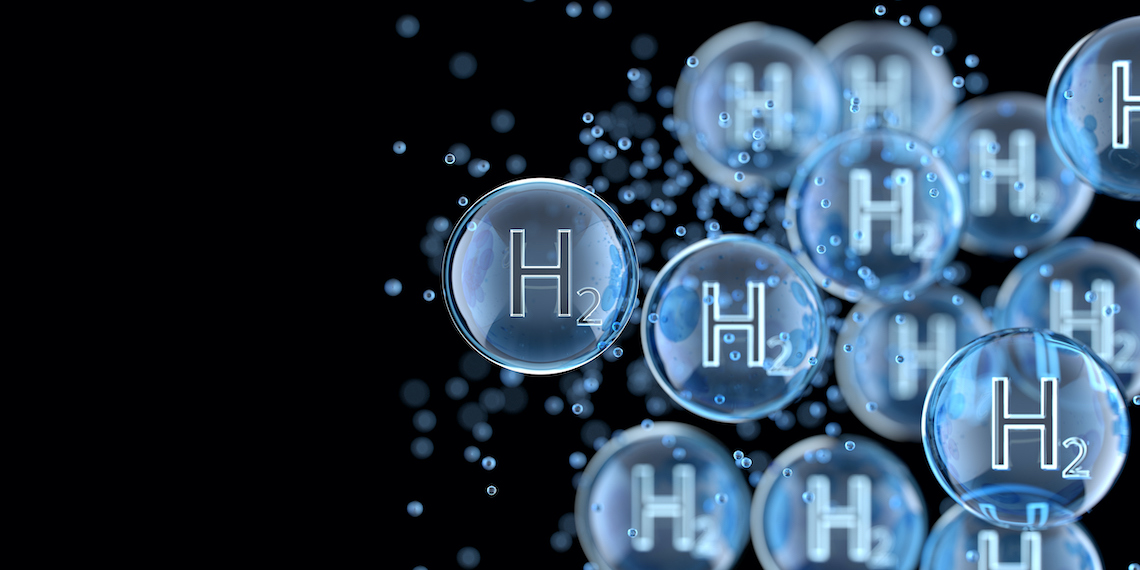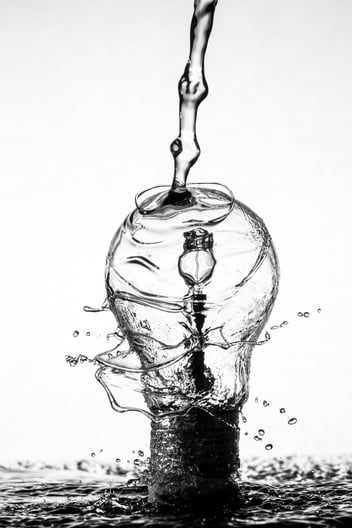New research explores water demands for hydrogen production

As Australia continues to shift towards renewable energy, hydrogen production seems to be offering promising outcomes. The water requirements for hydrogen pathways, however, can be very high and need to be considered carefully before production planning is implemented.
Engineering consultancy GHD has conducted research into the water demands for various hydrogen production pathways, producing a technical paper, Water demand and the many colours of hydrogen, outlining key considerations that need to be addressed before a hydrogen future becomes reality.
GHD Global Lead Water Rod Naylor said that, as Australia finds its way towards a net-zero future, hydrogen is likely to play a key role in the transition to renewable energy and the water sector is central to these efforts.
“The water industry has established a leadership position in the aspiration to transition to net zero through the commitment of various water authorities," he said.
“Also, because of the direct need for water in the production and consumption of hydrogen, we recognise that the water industry has a strong role to play in enabling that transformation through supporting the evolution of a hydrogen industry."
However, Naylor said, a large-scale transition to hydrogen has the potential to create competing demand for water resources, particularly in regional areas that already face significant water security challenges.
“In order to transition without negatively impacting these regions socially, economically and environmentally, it’s absolutely critical that the water elements are addressed early in the planning process, rather than as an afterthought,” he said.
“Understanding the water sources, as well as the implications of redirecting or utilising those water sources within hydrogen projects, isn’t being focused on very much at the moment. But we need to make sure we understand the potential negative effects.
“It’s not as simple as ‘we need some water to make hydrogen’. In some circumstances, the water allocations required are substantial, depending on the combination of the source of energy, the approach taken and also the carriers at the other end.”
Naylor said failing to carefully consider and assess the water requirements for hydrogen risks the success of the hydrogen transition, and perhaps even the opportunity to actually implement it.
“In terms of the risks associated with transitioning to hydrogen energy, water is a very serious consideration. Planning appropriately will help ensure the right balance is being struck in terms of how we manage water in regions,” he said.
“We need to be open about it, [to be] very clear on these water requirements and get the conversation going with the hydrogen industry, but also think about the trade offs involved in these opportunities and benefits.”
Clean, green hydrogen
In order to address the water needs for various pathways available in hydrogen production, GHD has been conducting detailed assessments of the resource requirements involved in different approaches.
With the national focus on generating renewable energy, the assessment started with the water requirements for green hydrogen, said GHD Senior Process Engineer Retha Coertzen.
“The perception is that we need 9 L per kilogram of hydrogen through electrolysis. That is true, from a stoichiometric perspective. However, once you start adding all the other elements this balance can change quite dramatically,” she said.
“Electrolysis needs a very pure stream of demineralised water. Depending on the quality of the incoming water, there can be a rejection rate of 30-40%. If the water stream is effectively a brine, it’s not a viable source for electrolysis.
“Further, once the water needs for evaporative cooling are added, the demand increases again.
Suddenly, the need is about 50 L per kilogram of hydrogen. And if renewable demands are considered, it can be up to about 80 L per kilogram.”
Coertzen said the potential impacts of this water balance on the hydrogen energy transition are concerning, which led to a comparative assessment of other forms of hydrogen production.
“If we start replacing all our natural gas and coal use with hydrogen generated from electrolysis, the volumes of water required become very problematic. The demand for water to generate green hydrogen is just enormous,” she said.
“We started looking at how this could be reduced, and there are some obvious things that you could do. But we also started looking at the water requirements for other pathways to hydrogen, so that we could understand what the interim hydrogen world might look like.
“Further, Australia currently has limited electrolyser manufacturing capacity. We can't jump straight into large-scale green hydrogen production. There will need to be a transition period before this occurs, so we started looking at other forms of hydrogen production as well.”
Other hydrogen pathways
Natural gas reforming, the most common form of hydrogen currently produced, involves steam reforming of natural gas. In order for this process to be renewable, however, the carbon dioxide that’s produced from the reforming process needs to be captured.
While this can be quite challenging, Coertzen said there are engineering studies underway that suggest carbon capture is quantifiably viable, and a worthwhile interim approach.
“From a stoichiometric perspective, blue hydrogen has a lower water demand; it’s about 5.5 L per kilogram of hydrogen. But once you start adding steam losses and the evaporative cooling demand, it can be up to 15-40 L of water per kilogram,” she said.
“While blue hydrogen production is less thirsty than green production, the water needs still get quite high. We would still need to figure out ways to reduce the water demand if scaling up the blue hydrogen production process.
“The main focus would be on reducing the water requirements for evaporation cooling. While air cooling is one option, there is only so much air cooling that can be deployed in Australia, especially in warm and humid locations that are perfect for solar generation.”
Coertzen said the research is also looking into biogas as a source of hydrogen, which would take the same typical pathway as natural gas reforming.
“With biogas, there is an added issue with CO2, as it is already present within the biogas from the start, so that needs to be removed. This increases the water demand again, and so the biogas pathway requires more water than natural gas reforming,” she said.
“We are also looking at biomass and coal gasification as a hydrogen source. This process has the highest demand for water — about 60-70 L per kilogram of hydrogen.”
Pathways for reducing water demand
Once the envelope is drawn around the entire process, all of these hydrogen production pathways have fairly high water demands, Coertzen said, but one of the best ways of reducing demand is by looking at innovative cooling mechanisms.
“Aside from considering approaches to cooling that require less water, desalination has a big role to play as we move towards renewable hydrogen as one of our main energy sources,” she said.
“If you look at the energy consumption of desalination compared to what you need for electrolysis, it’s quite small and won’t have a massive impact on the overall energy balance. It’s also relatively inexpensive, compared to electrolysis.”
Another critical consideration in terms of water demand for hydrogen is how the renewable resource is delivered, with GHD assessing the water implications associated with viable carriers, too.
“Water demand for hydrogen production is also implicated within carrier options, which is a critical consideration. Our assessment has addressed carriers too, in order to ensure the water requirements for the entire process have been considered,” she said.

